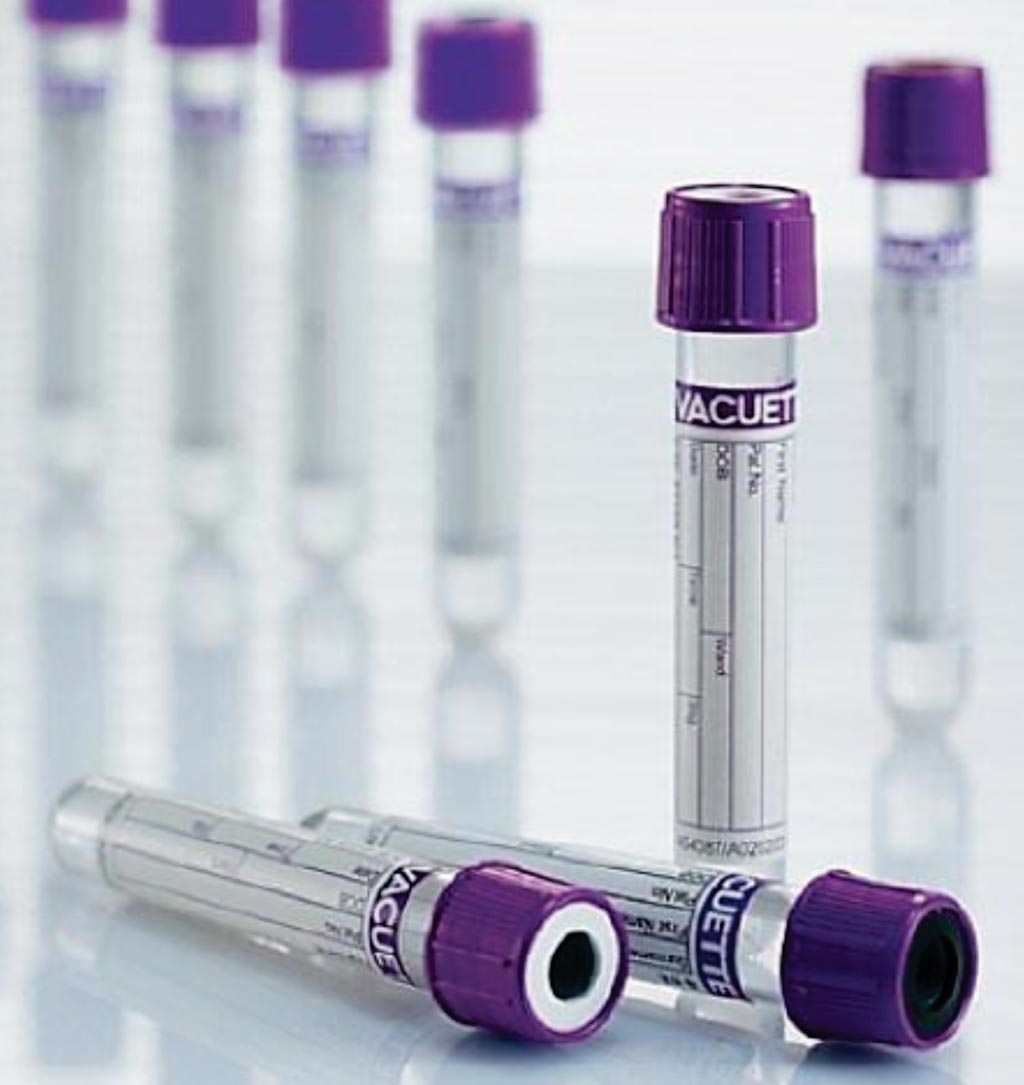Pre-Analytical Protocols Compared for Serotonin Quantification
By LabMedica International staff writers
Posted on 24 Oct 2019
Serotonin (5-hydroxytryptamine) is an important neurotransmitter and neuromodulator, which affects many neurophysiological processes, mood and cognition, regulates motility and sensibility in the bowel, and has an essential role in regulating blood pressure.Posted on 24 Oct 2019
Since only free plasma serotonin can bind to serotonin receptors and exert biological activity, it is important to have a reliable and simple pre-analytical procedure to prepare platelet-poor plasma (PPP) for quantification of non-platelet bound serotonin. Concentrations of serotonin in PPP may vary widely due to differences in pre-analytical procedures.

Image: The VACUETTE Venous K2EDTA blood collection tubes were found the most suitable for the pre-analytical conditions for serotonin assays (Photo courtesy of Greiner Bio-One).
Clinical scientists at the University of Bergen (Bergen, Norway) and their colleagues collected blood samples in 3 mL VACUETTE K2EDTA tubes and 5 mL VACUETTE K2EDTA gel tubes for isolation of plasma from nine healthy adults recruited at Haukeland University Hospital (Bergen, Norway) in September 2015. Six pre-analytical protocols were compared for preparation of PPP from EDTA whole blood for quantification of serotonin.
Three combinations of centrifugation with a mild centrifugation of gel-free EDTA tubes followed by a stronger centrifugation were compared to single-stage centrifugation of EDTA tubes with separator gel and heat shock treatment of blood prior to centrifugation. All samples were analyzed for serotonin using the same enzyme linked immunosorbent assay (ELISA) method.
The team reported that in one method serotonin concentrations in PPP prepared by the method of a single centrifugation at 1800 ×g at 4 ⁰C was significantly different from PPP prepared by all other methods. The scientists found that a combination of a milder first centrifugation of gel-free EDTA-tubes to separate blood cells (100 or 200×g) followed by a stronger centrifugation of the supernatant (4,500 or 14,500×g) resulted in the lowest measured serotonin concentration in PPP.
The authors concluded that two successive centrifugations to produce PPP for serotonin analysis; first a mild centrifugation to avoid mechanical stress on the platelets, and next a stronger centrifugation to remove platelets, is superior to the use of gel tubes and heat shock treatment. Their interpretation was that the first centrifugation induced little mechanical stress on the blood platelets and the second centrifugation was sufficiently strong to prevent contamination of platelets in the PPP fraction. The study was published online on September 19, 2019, in the journal Practical Laboratory Medicine.
Related Links:
University of Bergen
Haukeland University














